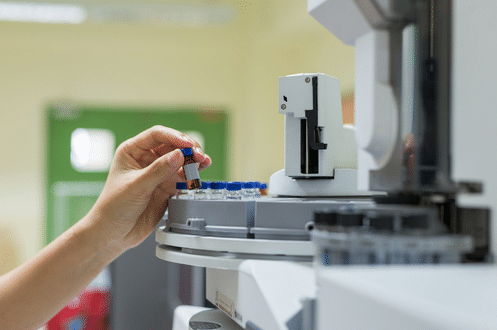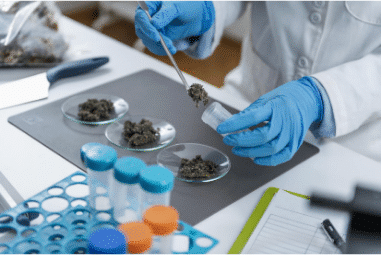Analysis of the Clinical Mass Spectrometry Market

Clinical mass spectrometry is increasingly being used in routine lab settings, and its use in specialized clinical laboratories and research settings has gained broad acceptance. Due to its combination with liquid chromatography (LC) or gas chromatography, this technology has experienced rapid development. (GC). Mass spectrometry (MS) has a wide range of clinical applications in areas like clinical toxicology, monitoring of therapeutic medications, and drugs of abuse.
In specialized clinical laboratories and research settings, the use of clinical mass spectrometry is widely accepted, and its application in routine labs is growing significantly. Because it may be combined with gas chromatography or liquid chromatography, this technique has experienced rapid expansion. (GC). Drugs of abuse, clinical toxicology, and therapeutic drug tracking are just a few of the areas where mass spectrometry (MS) has proven to be clinically useful.
Request a copy of the report’s sample here.
In all phases of drug development, including lead compound identification and structural characterization, clinical mass spectrometry is a versatile analytical technique that can measure and classify complicated combinations.
Clinical mass spectrometers like matrix-assisted laser desorption/ionization help clinical labs handle a large number of samples through analyser automation or entire automation. (MALDI-TOF). Being one of the main customers in this industry, clinical laboratories considerably profit from the help of automated systems that make it possible to process ever-increasing workloads effectively.
Clinical mass spectrometry advancements have made it simpler to quantify and distinguish between the specific contributions of various substances, such as thyroid hormones and 25-hydroxyl vitamins D3 and D2. Mass spectrometry translational research has been used to find novel tumor indicators, blood-based biomarkers, endogenous metabolites, and disease biomarkers. These developments will therefore probably increase the need for clinical mass spectrometry equipment.

The market for clinical mass spectrometry was estimated to be worth US$ 697.2 Mn in 2019 and is expected to increase at a CAGR of 5.5% from 2019 to 2027.
The growing demand for automation in diagnostic techniques is expected to fuel expansion in the clinical mass spectrometry market.
Mass spectrometry is useful for a variety of tasks, including research and diagnostic studies in functional genomics, proteomics, and metabolomics. As a result, there is now a higher need for an affordable sample analysis platform, which has forced manufacturers to focus on new product development and technological developments in order to meet the need for automated diagnostic instruments. At a EuroMedLab conference in Athens, Greece, in 2017, Thermo Fisher Scientific Inc. unveiled the Scientific Cascadion SM Clinical Analyzer, a device that uses clinical analyzers with the sensitivity and specificity of liquid chromatography-tandem mass spectrometry.
Advanced features like Mass EXTEND primer extension and the delivery of samples in nanoliter quantities onto spectroCHIPS are available with automated laboratory systems. These systems use pre-loaded workstations for data analysis, which makes them simple to manage, quick to give findings, and less expensive. Mass spectrometers are more advantageous than traditional immunoassays in terms of quality assays, automation, convenience of use, increased sensitivity, reliable data output, non-specific binding, less cross-reactivity, and minimum downtime. They are also more affordable.
Restraints
The capital investment needed to install and maintain the devices is expected to impede the growth of the global market. Small diagnostic labs and clinics, especially those in underdeveloped countries, cannot afford mass spectrometers. In addition, operating the devices is labor-intensive and calls for a skilled crew. The market’s expansion is anticipated to be hampered by a shortage of experienced operators.
Regional Perspectives
Based on geographic regions, the global market for clinical mass spectrometry is divided into Africa, Latin America, Asia Pacific, the Middle East, Europe, and North America.
Due to factors including research and development activities and significant government funding, which are fueling the industry’s growth in the area, the clinical mass spectrometry market is estimated to have the greatest market share throughout the projected period.
For example, the Federation of Analytical Chemistry and Spectrometry Societies and the American Society for Mass Spectrometry were established in 1969, with over 7,500 scientists collaborating to advance the clinical application of mass spectrometry and related topics in the industrial, academic, and government sectors. As a result, North America now has a strong research basis, which has contributed to the expansion of the clinical mass spectrometry industry there.
ALSO READ THIS: Scientists Find New Disease In Wild Birds | Climate Change

